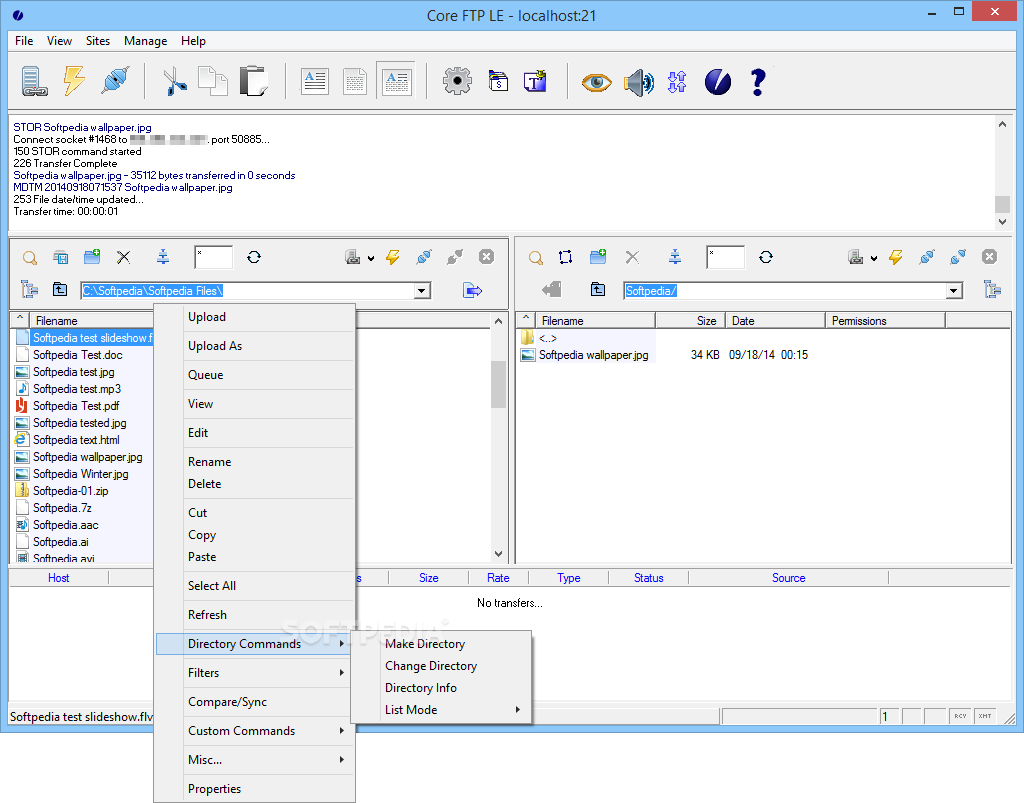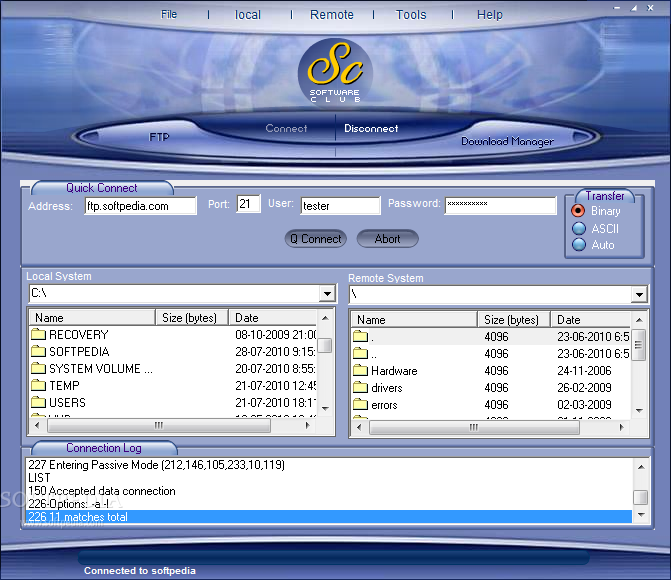

- FTP CLIENT DOWNLOAD RECURSIVELY HOW TO
- FTP CLIENT DOWNLOAD RECURSIVELY PATCH
- FTP CLIENT DOWNLOAD RECURSIVELY SOFTWARE
- FTP CLIENT DOWNLOAD RECURSIVELY PASSWORD
Invoke the editor by entering the bookmarks command with no parameters: For example, type these commands to bookmark /path/somedir and name it topsecret:Ī bookmark editor lets you open, edit, delete, replicate, and add bookmarks. To create a bookmark on a particular directory location, first navigate to that directory and then enter the bookmark command followed by a name to identify the bookmark. Bookmarks store the connection information, including the username, the password, the hostname, and the target directory location. If you FTP to the same sites regularly, you can save time by using NcFTP’s bookmark feature. Similarly, you can download a directory recursively using the NcFTP get -R command: Standard FTP also supports a put command, but it’s limited to uploading single files. Use the put -R command to do a recursive directory upload: Recall that my main goal was to upload a directory structure. For instance, you can type in the first few characters of a filename and then press Tab to fill in the rest of the name automatically. NcFTP supports autocompletion for both commands and filenames. You can use the lls and the lcd commands to list and navigate the local working directory. I’ll presume you’re familiar with basic FTP commands such as dir and cd. If you’ve used the standard FTP command before, you should feel right at home here.
FTP CLIENT DOWNLOAD RECURSIVELY PASSWORD
Ncftp -u username -p password Ī successful connection puts you in an NcFTP shell. Or if you need to log in with a valid username, use the -u and -p parameters: I picked NcFTP.Īfter installing the software, connect to your host anonymously by entering the ncftp command followed by the hostname: Fortunately, many graphical and command-line FTP clients do, including NcFTP, yafc, and LFTP. Again, the standard FTP command doesn’t support recursive directory upload. Next, I turned to command-line FTP clients. Mozilla, on the other hand, does support uploads, but it can upload only one file at a time. I started by looking into Mozilla Firefox, but to my surprise, Firefox supports only FTP downloads, not uploads. I found what I needed in an application called NcFTP. I needed an FTP client capable of uploading a directory structure recursively. Net Framework 2.0 and Mono 2.0) and compatibility with all the relevant FTPS servers is also a mandatory goal for this project.I recently had to upload some content to a Web site, and the only access available was via FTP. The client provides also a wide range of options and commands via command line arguments, making it fully functional when used in scripts, without the shortcomings of the standard FTP clients available on most platforms. Net and the Powershell, but the standard provided by the framework was not powerful enough (more on this below).
FTP CLIENT DOWNLOAD RECURSIVELY HOW TO
Furthermore, I wanted to provide a sample on how to connect to a FTP server using SSL using Microsoft.

FTP CLIENT DOWNLOAD RECURSIVELY SOFTWARE
Looking for a free client to be used during my session demos, showing interoperability with other platforms, I realized that there was no single piece of software supporting all the features I needed.
FTP CLIENT DOWNLOAD RECURSIVELY PATCH
Note: vsftpd FTPS support requires version 2.1.0 or a small patch avilable on the project homepage for version 2.0.7. Support for SSL/TLS has been introduced in the most used FTP servers: Microsoft FTP for IIS 7.0, vsftpd, wu-ftpd, FileZilla server, to name a few. The SSL/TLS encryption feature, as stated in the RFC 4217 document, provides a solution for this and other security related limitations. Altough FTP is one of the oldest Internet protocols still in use today, some of its features are still largely needed as they can't be easily replaced by, for example, an HTTP server. One of the main problems with standard FTP communications, is that all the username / password communication is performed in clear text, easily eavesdropped by sniffing the network traffic. The idea of this client was born while preparing some material for a technical speech session I was going to give at the Italian Microsoft TechDays - WPC 2008, about IIS 7.0 new features, including the Microsoft FTP for IIS 7.0 add in and its freshly introduced support for SSL/TLS. A list of the implemented RFC standards and specific commands follows. The aim of this FTP/FTPS client is to support the advanced features provided by most modern FTP servers, primarily, but not limited to, encryption via SSL/TLS and UTF8.


 0 kommentar(er)
0 kommentar(er)
